"Cherishing Little Steps - A Haven for Baby and Family Journeys"
Understanding Car Seat Stages
Hey there, buckle up and get ready for a ride through the world of car seat stages! Just like a caterpillar transforming into a butterfly, your little one will go through different stages in their car seat journey.
From rear-facing infant seats to booster seats with high backs, each stage offers unique safety features and benefits. In this guide, we’ll explore the various car seat stages, including the LATCH system, weight and height limits, and expiration dates.
By understanding these stages, you’ll be equipped to choose the perfect car seat that fits your child’s needs. So, let’s dive in and ensure your precious passenger stays safe and snug on every road trip!
Key Takeaways
- There are different types of car seats for different stages of a child’s growth, including rear-facing infant seats, forward-facing toddler seats, convertible seats, all-in-one seats, booster seats with high backs, backless booster seats, combination seats, and 5-point harness seats.
- Proper installation and fit of car seats is crucial for safety, including following installation techniques, regularly checking for proper fit, using the LATCH system, and understanding the importance of proper installation for 5-point harness seats.
- Booster seat requirements vary by manufacturer and it is important to ensure that a child meets the height and weight requirements for a high back booster seat, as well as checking the specific guidelines for the chosen seat.
- There are various benefits and considerations to take into account when choosing a car seat, such as the benefits of backless booster seats and combination seats, the importance of weight and height limits, and following expiration dates and safety regulations.
Rear-Facing Infant Car Seats
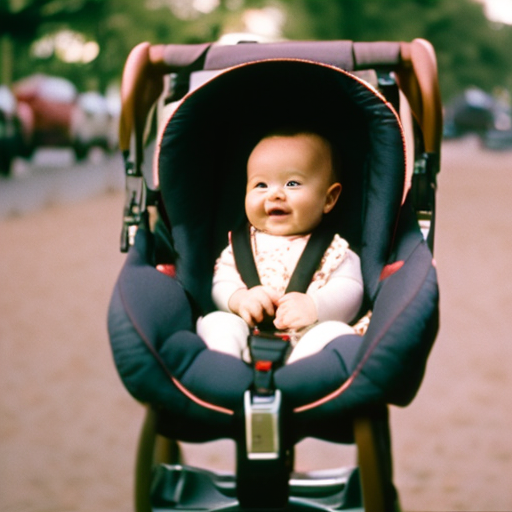
If you’re a parent or caregiver, choosing a rear-facing infant car seat is an essential step to ensure the safety of your child in a vehicle. Rear facing car seat safety is of utmost importance, especially for infants and young children. Research has shown that rear-facing car seats provide the best protection in the event of a crash. The benefits of rear-facing car seats are numerous and can’t be overstated.
One of the main benefits of rear-facing car seats is that they provide excellent support for your child’s head, neck, and spine. In a rear-facing position, the force of a crash is distributed evenly across the entire body, reducing the risk of serious injury. Additionally, rear-facing car seats help to prevent the head from being thrown forward, which can cause whiplash and other neck injuries.
Furthermore, rear-facing car seats offer superior protection for your child’s delicate and developing body. Infants have weaker neck muscles and a larger head in proportion to their body, making them more vulnerable to injury. By keeping them rear-facing for as long as possible, you’re giving them the best chance of staying safe and minimizing the risk of harm.
Forward-Facing Toddler Car Seats

To transition your child from a rear-facing infant car seat, it is important to understand the benefits and features of forward-facing toddler car seats. These car seats are designed to provide optimal safety and comfort for your growing toddler. One of the main benefits of a forward-facing car seat is that it allows your child to have a better view of their surroundings, which can help keep them engaged and entertained during car rides.
When it comes to installing a forward-facing car seat, it is crucial to follow the manufacturer’s instructions carefully. This ensures that the seat is properly secured and provides maximum protection in the event of a collision. Many forward-facing car seats come with LATCH (Lower Anchors and Tethers for Children) systems, which make installation easier and more secure.
Forward-facing car seats also come with a range of safety features that help protect your child. These features may include side-impact protection, adjustable harness systems, and energy-absorbing foam. It is important to choose a car seat that meets or exceeds safety standards to ensure the highest level of protection for your little one.
Here is a table outlining some key features to look for when choosing a forward-facing toddler car seat:
| Feature | Description |
|---|---|
| Side-impact protection | Provides additional protection in the event of a side collision. |
| Adjustable harness system | Allows you to adjust the straps as your child grows. |
| Energy-absorbing foam | Absorbs impact in the event of a crash. |
Convertible Car Seats
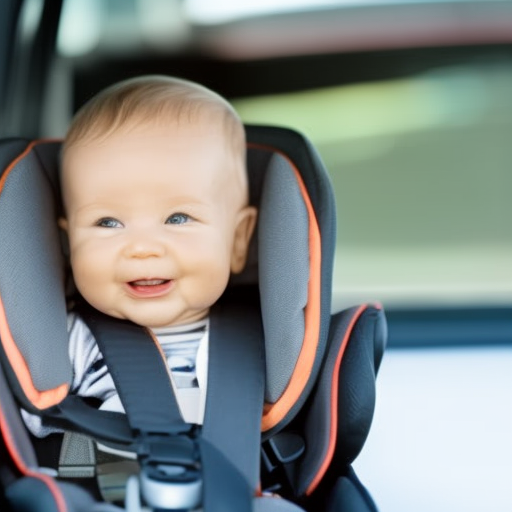
When transitioning from a forward-facing toddler car seat, it’s important to understand the benefits and features of convertible car seats. These versatile seats are designed to grow with your child, providing safety and comfort throughout their early years.
Here are three key reasons why convertible car seats are an excellent choice for transitioning to the next stage:
-
Longevity: Convertible car seats can be used in both rear-facing and forward-facing positions, accommodating infants and toddlers alike. This means that you won’t have to purchase another car seat as your child grows, saving you money in the long run.
-
Safety: Convertible car seats are designed with advanced safety features to protect your child in the event of a collision. They offer superior side-impact protection, energy-absorbing foam, and adjustable headrests to ensure proper fit and support.
-
Convenience: Switching between rear-facing and forward-facing modes is a breeze with a convertible car seat. They come with easy-to-use harness systems and adjustable recline positions, allowing you to customize the seat to your child’s needs.
When considering convertible car seat safety and transitioning to a convertible car seat, it’s crucial to choose a seat that meets all safety standards and fits your child’s size and weight requirements. Always read the manufacturer’s instructions carefully and ensure a proper installation for optimal protection.
All-In-One Car Seats
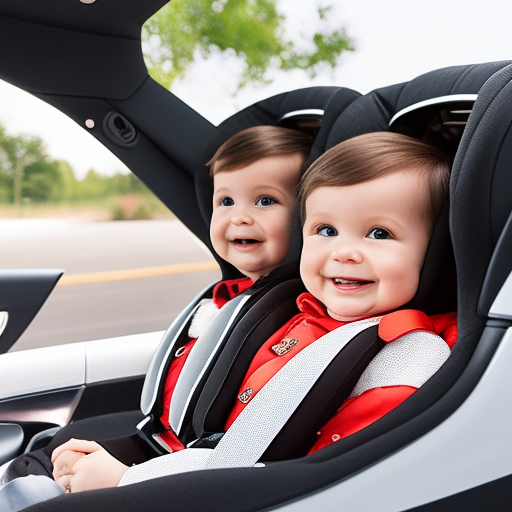
All-In-One car seats provide a comprehensive solution for parents looking for a single seat that can accommodate their child from infancy to toddlerhood. These seats are designed to be adaptable and adjustable, ensuring that your child is safe and comfortable as they grow.
One of the biggest benefits of an all-in-one car seat is its longevity. Instead of purchasing multiple car seats as your child grows, you can invest in one seat that will last for several years. This not only saves you money but also eliminates the hassle of constantly installing and uninstalling different seats.
When it comes to installing an all-in-one car seat, there are a few tips to keep in mind. First, make sure to carefully read and follow the manufacturer’s instructions. Each seat may have specific installation requirements that need to be followed for optimal safety. Additionally, take the time to properly adjust the harness and ensure a snug fit on your child. This will help prevent any unnecessary movement during a car ride. Finally, always double-check that the seat is securely installed in your vehicle before hitting the road.
Booster Seats With High Backs
If you’re looking for a booster seat with high backs, consider the added safety and support they provide for your child. High back booster seats are designed to provide extra protection for your child’s head and neck in the event of a crash.
Here are three key things to keep in mind when it comes to booster seats with high backs:
-
Booster seat requirements: It’s important to ensure that your child meets the height and weight requirements for using a high back booster seat. These requirements vary by manufacturer, so be sure to check the specific guidelines for the seat you choose.
-
Proper installation techniques: Installing a high back booster seat correctly is crucial for your child’s safety. Follow the manufacturer’s instructions carefully and make sure the seat is securely fastened to your vehicle’s seat. Additionally, always secure your child with the vehicle’s seat belt, making sure it fits snugly across their lap and shoulder.
-
Regularly check for proper fit: As your child grows, their needs may change. It’s important to regularly check that the high back booster seat still provides a proper fit. Ensure that the seat belt fits properly across your child’s lap and shoulder, and that the headrest is adjusted to the appropriate height.
Backless Booster Seats
To ensure your child’s safety and comfort as they transition from high back booster seats, consider using a backless booster seat for added convenience and freedom of movement. Backless booster seats are designed to provide the necessary height and positioning for the seat belt to properly fit your child. They’re suitable for children who’ve outgrown their high back booster seats but still need a boost to ensure the seat belt fits correctly.
When it comes to backless booster seat safety, there are a few important factors to consider. Firstly, make sure the booster seat is properly installed in your vehicle. Follow the manufacturer’s instructions and use the seat belt to secure the booster seat firmly in place. Secondly, ensure that the seat belt is positioned correctly on your child. The lap belt should fit snugly across their upper thighs, and the shoulder belt should rest comfortably across their chest and shoulder.
One of the benefits of using backless booster seats is their portability. They’re lightweight and easy to move between vehicles, making them convenient for families on the go. Additionally, backless booster seats allow children to have more freedom of movement, as they don’t have the high backrest restricting their upper body. This can be especially beneficial for older children who may feel more independent and want to buckle themselves in.
Combination Car Seats
Transitioning to combination car seats can provide a seamless and convenient way to accommodate your child’s growing needs while ensuring their safety and comfort. These versatile car seats offer several benefits that make them a popular choice among parents:
-
Longevity: Combination car seats are designed to grow with your child, typically accommodating them from toddlerhood to around 10 years old. This means you won’t have to constantly buy new car seats as your child gets older.
-
Ease of Use: Unlike some other types of car seats, combination car seats are relatively easy to install and adjust. They typically feature a straightforward installation process, with clear instructions and user-friendly features.
-
Versatility: Combination car seats can be used in multiple configurations, allowing you to adjust the seat as your child grows. They often have adjustable harness heights and can convert from a forward-facing harness seat to a high-back booster or backless booster seat.
When installing a combination car seat, it’s important to follow these tips to ensure proper installation:
-
Read the car seat manual thoroughly before installation, as each car seat may have specific instructions.
-
Ensure that the car seat is securely installed using either the vehicle’s seat belt or the lower anchors (LATCH system).
-
Double-check that the harness straps are snug and properly positioned on your child’s shoulders.
5-Point Harness Car Seats
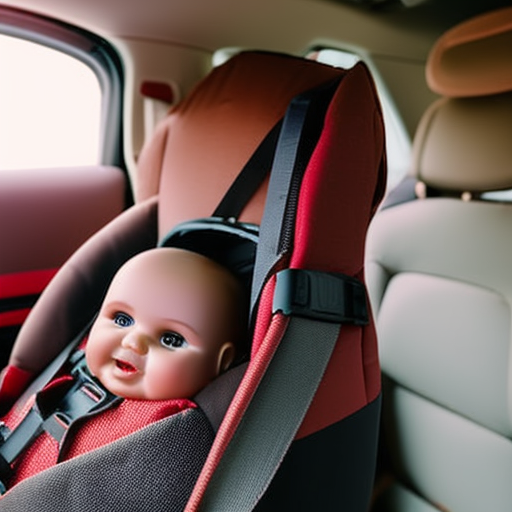
When installing point harness car seats, ensure a secure and proper installation for your child’s safety and comfort. Point harness car seats are designed to keep your child restrained using a five-point harness system. This system includes two shoulder straps, two waist straps, and one strap that goes between your child’s legs. The harness is connected to the car seat using various buckle types such as the LATCH system or the vehicle’s seat belt.
One important factor to consider when choosing a point harness car seat is its safety ratings. Look for car seats that have been tested and approved by independent organizations such as the National Highway Traffic Safety Administration (NHTSA) or the Insurance Institute for Highway Safety (IIHS). These organizations evaluate car seats based on their ability to protect children in different crash scenarios.
When installing the car seat, make sure it’s tightly secured to the vehicle seat. Check the car seat’s manual for specific instructions on how to properly install it using either the LATCH system or the seat belt. Always double-check that the harness straps are snug and properly positioned on your child’s shoulders and hips.
LATCH System and Installation
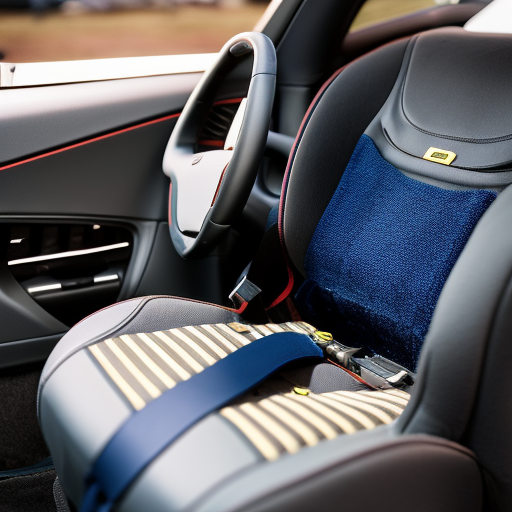
Secure your child’s car seat using the LATCH system for a safe and easy installation. The LATCH system, which stands for Lower Anchors and Tethers for Children, is a standardized method for securing car seats in vehicles. It eliminates the need to use seat belts for installation, providing a more secure and convenient option.
Here are three important things to know about LATCH system operation and common installation mistakes:
-
Understand the LATCH system: The LATCH system consists of lower anchors and top tether anchors in your vehicle, as well as corresponding attachments on your car seat. Familiarize yourself with your car seat’s LATCH connectors and the locations of the anchors in your vehicle.
-
Use the correct attachments: Ensure that you’re using the correct attachments on your car seat for the LATCH system. Some car seats have different attachments for forward-facing and rear-facing installations, so make sure to use the appropriate ones.
-
Avoid common installation mistakes: One common mistake isn’t tightening the LATCH straps enough. It’s important to pull the straps tight to ensure a secure installation. Another mistake is using both the LATCH system and seat belts simultaneously, which can create an unstable installation. Lastly, avoid using the LATCH system if your child exceeds the weight limit specified by the car seat manufacturer.
Weight and Height Limits
To ensure the safety of your child, it is important to be aware of the weight and height limits of their car seat. These limits are set by the car seat manufacturer and are crucial in ensuring that your child is properly restrained and protected in the event of a crash.
Below is a table that provides a general guideline for weight and height limits for each car seat stage:
| Car Seat Stage | Weight Limit | Height Limit |
|---|---|---|
| Rear-Facing | 4-40 lbs | Up to 40 in |
| Forward-Facing | 22-65 lbs | Up to 49 in |
| Booster | 30-120 lbs | Up to 57 in |
Please note that these limits may vary slightly depending on the specific car seat model. It is important to consult the car seat’s user manual for the exact weight and height limits for your particular car seat.
It is crucial to follow these weight and height limits to ensure that your child is properly protected. Using a car seat that is too small or too large for your child can compromise their safety in the event of a crash. Regularly checking and adjusting the car seat as your child grows is essential to keep them safe on every car journey.
Expiration Dates and Safety Regulations
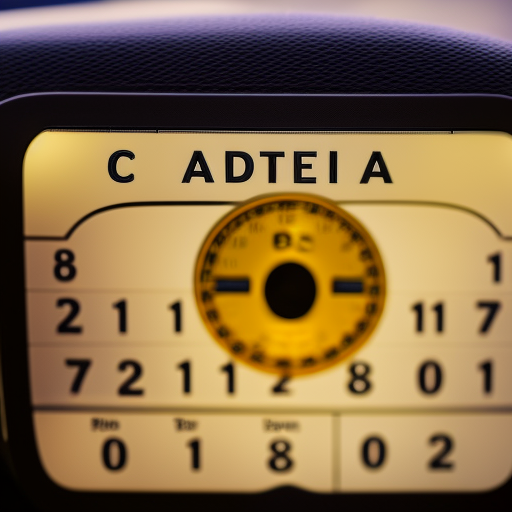
Regularly check the expiration date on your car seat to ensure it’s still safe and effective for use. The expiration date is of utmost importance when it comes to car seat safety regulations. Here are three reasons why:
-
Material Degradation: Over time, the materials used in car seats can deteriorate due to exposure to sunlight, fluctuations in temperature, and general wear and tear. This degradation can compromise the seat’s structural integrity and reduce its ability to protect your child in the event of an accident.
-
Technological Advancements: Car seat safety standards and regulations are constantly evolving as new research and technologies emerge. By adhering to the expiration date, you can ensure that your car seat meets the most up-to-date safety standards and incorporates the latest safety features.
-
Recall Updates: Car seat manufacturers may issue recalls or safety updates to address potential defects or improve the seat’s performance. Checking the expiration date allows you to stay informed about any relevant recalls or updates, ensuring that your child remains protected.
Choosing the Right Car Seat for Your Child
When choosing a car seat for your child, it’s important to consider their age, size, and developmental needs. To ensure their safety while on the road, here are some car seat safety tips and a car seat installation guide to help you make the right choice.
First, it’s crucial to select a car seat that’s appropriate for your child’s age and size. There are different types of car seats available, including rear-facing seats, forward-facing seats, and booster seats. Make sure to choose the one that’s suitable for your child’s stage of development.
Next, pay attention to the weight and height limits specified by the car seat manufacturer. It’s essential to follow these guidelines to ensure proper protection for your child. Additionally, check for any recalls or safety issues related to the car seat model you’re considering.
When installing the car seat, carefully read and follow the instructions provided by the manufacturer. Ensure that the seat is securely and tightly installed in your vehicle. Double-check the seat’s harness and ensure it’s snug and properly adjusted to your child’s body.
Regularly inspect your car seat for any signs of wear and tear. If you notice any damage or if the car seat has been involved in an accident, it’s crucial to replace it immediately.
Frequently Asked Questions
How Do I Properly Clean and Maintain My Car Seat?
To properly clean and maintain your car seat, follow these steps. Avoid common mistakes like using harsh chemicals or machine washing. Instead, use a mild soap and water solution, and spot clean any stains. Regularly inspect for wear and tear.
Can I Use a Car Seat That Has Been Involved in a Minor Accident?
You shouldn’t reuse a car seat that’s been in a minor accident. Even though it may seem fine, there could be hidden damage. Follow guidelines for car seat accidents to ensure your child’s safety.
Are Car Seat Accessories, Such as Head Supports and Strap Covers, Safe to Use?
Head supports and strap covers for car seats can be safe to use as long as they meet car seat safety standards. They can provide added comfort and support for your child during car rides.
Can I Use a Car Seat That Is Expired?
Using an expired car seat puts your child’s safety at risk. It may not provide the necessary protection in case of an accident. Additionally, using an expired car seat can have legal implications if you are caught.
How Do I Know if My Car Seat Is Installed Correctly?
To ensure your car seat is installed correctly, follow these car seat installation tips. Avoid common mistakes like loose straps or incorrect recline angle. Double-check your work for your child’s safety.
Conclusion
So there you have it! Now you understand the different stages of car seats and how to choose the right one for your child. Remember to consider their weight and height limits, as well as the expiration dates and safety regulations.
Installing the car seat using the LATCH system is crucial for their safety. Whether you opt for a rear-facing infant seat, a forward-facing toddler seat, or an all-in-one seat, make sure it’s the perfect fit for your little one’s journey on the road.
Stay informed and keep your child safe!


